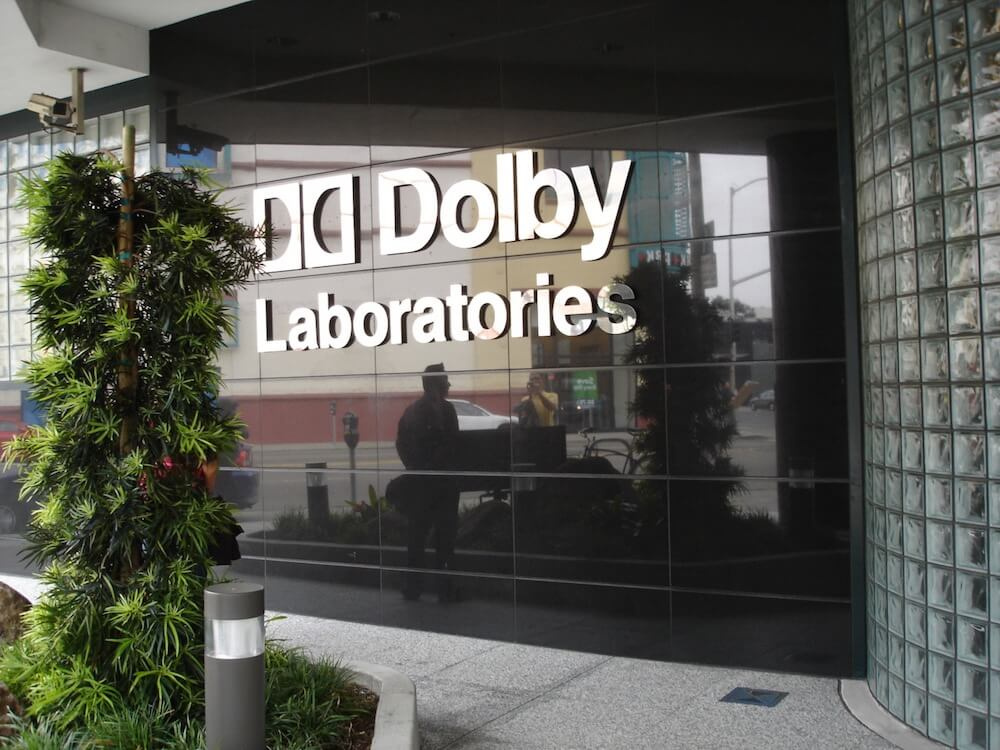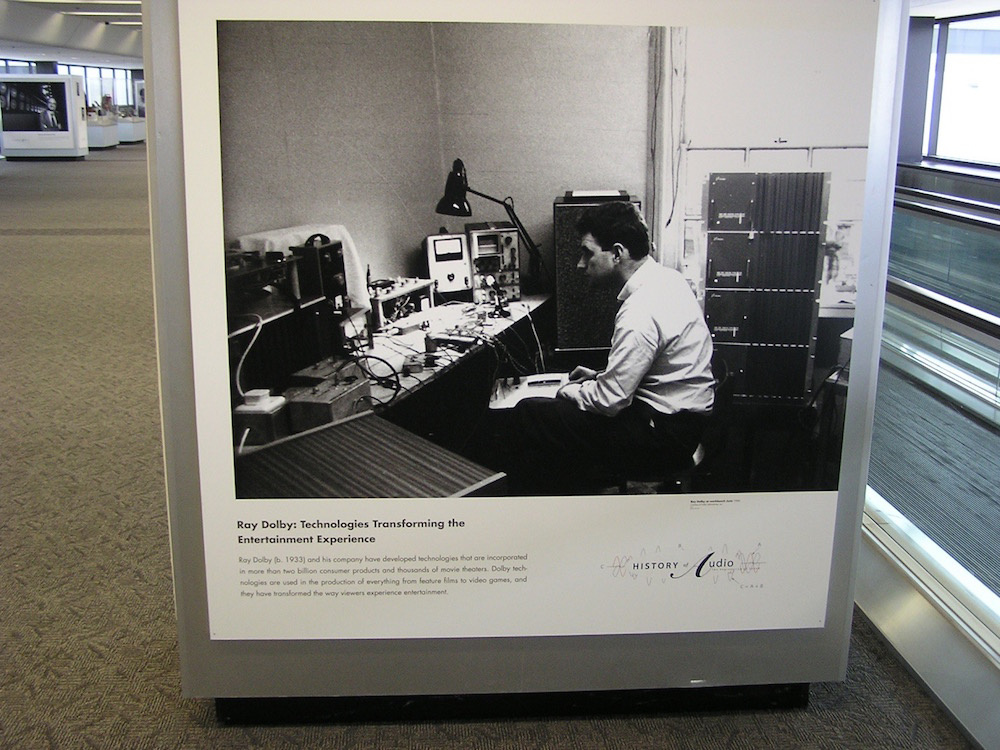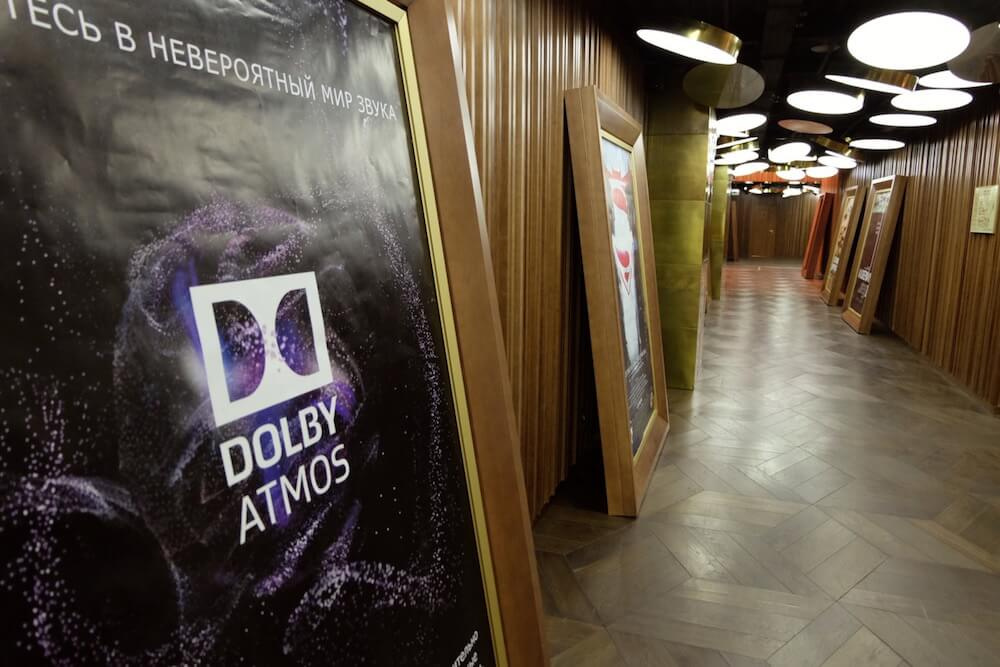How to make a fortune from noise and become a legend
That which can be heard cannot always be seen.
- Ray Dolby
The tape recorder steadily turns reels, sitar, tabla and sad Indian songs are heard from the speaker with a crackle. But to completely immerse yourself in the world of Indian folklore, the noise on the tape interferes: the louder the sound on the reel, the more the recording is noisy, and it is almost impossible to make out anything.
It is at this moment that Ray Dolby understands what he will do all his life.
')
About how the young physicist founded the company, which is known all over the world, that it connects with the Russian Empire and nuclear energy and how the legendary brand Dolby Laboratories appeared - let us tell in this material.
 Photo of Mike Renlud CC
Photo of Mike Renlud CCSkipping school and going to the movies
Ray Milton Dolby was born on January 18, 1933 in Portland, USA to a wealthy family. Since childhood, he loved music and played several musical instruments: clarinet, piano and guitar. But the young Dolby was not so much interested in music as the nature of the sound itself. In adolescence, parents gave Ray filmmaking , and from that moment he begins to be keenly interested in everything related to cinema.
Ray Dolby often skipped school, and in 1948 even worked as a projectionist at a local cinema to work alongside his studies. There he is noticed by a native of the Russian Empire, the founder of Ampex (this company built the first VCR), Alexander Matveyevich Ponyatov, and invites you to work.
A year later, Ray Dolby entered Stanford. Nevertheless, he prefers a new job to university classes, and disappears a few hours a day at Ampex, where Ponyatov put him at the head of a group of electronics engineers working on a video recorder.
In one of his statements, which became a classic, Dolby recalls how back in 1949 the issue of falling prices for tape recorders was discussed. Then Ampex-200 cost $ 4,000, but no one had confidence in the fall below two thousand.
Dolby managed to get a bachelor's degree at Stanford and “grab” two scholarships to which Ray enters the prestigious Cambridge and already in 1961 received a doctoral degree in physics for studying long-wave X-rays.
In the same place, a young scientist becomes an atomic energy consultant for the United Kingdom, hitting this position at the age of 27. At this time, the scientific community finally recognizes the talents of Ray Dolby, who loved to skip the university and go to the movies.
Looking for yourself in India and founding a laboratory
In 1963, Ray Dolby knocks out the position of UNESCO adviser in India, despite the fact that this appointment is far less prestigious than his previous position. For two years, the physicist travels to different parts of India and carries with him a reel tape recorder, on which he records local folklore, music and songs.
But when Dolby begins to listen to the recordings, he realizes that because of the terrible background noise, it is almost impossible to disassemble something and the whole “magic of India” disappears. It was then that Ray Dolby decides to devote his life to working with sound, in particular, with noise reduction.
... the one who manages to deal with the problem of noise suppression will be provided with work and money for life
- Ray Dolby
In May 1965, he returned to London, where he founded his company, Dolby Laboratories. At the same time, it was originally called differently, “Stretcher,” but later Ray understood that his child should bear his name.
As the founder of the company said, once he overheard a conversation between two workers, one of whom asked the other: “Well, when will we transport the dolby?”, Referring to the equipment produced in the Stretcher. So Dolby became a household name and turned into a new company logo, which has since been called Dolby Laboratories.

Photo of Clyde Adams III CC
In general, Ray presented his essence of his future invention back in India: hissing and whistling on recordings are most pronounced in quiet places. This is how the first technique, called Dolby A, appeared .
In this noise reduction system, Ray divided the audio frequency range into four sub-ranges: low frequency (hum and noises of mechanisms that produce tape recorder systems), mid-frequency (broadband noise) and two high frequency (sound of the recording media itself).
Dolby realized that the high level signal masks the tape noise, so he does not need noise reduction and must pass from the input to the output of the device unchanged. Accordingly, in the Dolby A system, each frequency channel is processed separately , and noise suppression is used only if the signal is relatively weak.
As a result, the noise of the tape drive mechanisms is removed, and the music signal remains as it was. Dolby A gave a marginal gain of a weak signal by 10 decibels, but for the time being did not remove the noise completely.
According to Dalby himself, the first “clean” recording was the concert of Mozart performed by pianist and conductor Vladimir Ashkenazi, Ray’s love for classical music affected him. The Dolby A system was professional, not intended to be distributed to regular users, and Decca Records recorded the Ashkenazi concert using the system.
Care to the masses
In order to listen to recordings as Dolby, Ray developed a device that had a button to go to listen to Dolby. On such a device, one could listen to any recording; when the button was pressed, the noises “were cut off”.
The Dolby B system was developed as a single channel, and later the inventor adapted it to tape recorders. This system became the most replicable in Dolby's career, by the mid-70s most cassettes were produced using Dolby B.
Dolby did not charge any royalties for the release of such cassettes, the only requirement was the labeling of the products with the Dolby System trademark, so there was a demand for tape recorders equipped with a Dolby noise reduction system.
Already by 1981, the number of “dolbized” tape recorders released exceeded 100 million, and the commercial success allows Ray Dolby to open an office in the USA, where he gladly returns from England.
Hollywood has become another driver for Ray Dolby’s success. The first film, voiced by the Dolby system, was “ A Clockwork Orange ” by Stanley Kubrick, released in 1971. Dolby's inventions are becoming useful for movies: first, he is developing a new decoder and soundtrack for 16 mm film, and later for 35 mm.
But the most powerful leap came with the introduction of Dolby Stereo, which consisted of four audio channels - left and right for effects and music, central to the dialogues and surrounding to create an atmosphere.
For the first time, Dolby Stereo was featured in George Lucas' legendary Star Wars. Later, the director promised to shoot “The Empire Strikes Back” in the same format, which forced most cinemas to update the equipment so that the film could be rented from them.
At about the same time, the Dolby C noise reduction system appears. It is actively used developments implemented in Dolby B, despite the fact that manufacturers of cassette equipment at the time of the appearance of the series "C" perceived the previous generation as obsolete. Despite visible progress and widespread popularity, the tapes recorded in Dolby C sounded much worse on tape recorders that were not equipped with the appropriate playback technology.
Soon the analogue was replaced by a “figure”, and the Dolby Digital format appeared. Cinemas barely kept up with Ray’s engineering thought, but re-equipped their rooms with pleasure, because Dolby always paid for itself. In 1992, the famous Dolby 5.1 appears with six channels of surround digital sound. A pioneer among the films in this format was “Batman Returns”.
In 1999, the long-awaited sequel of the George Lucas saga, The Hidden Threat. Especially for this tape, Ray designed DolbyDigital EX 6.1 with an additional rear surrounding channel.
Legend today
The latest popular development of the company was Dolby Atmos - 128 audio tracks, where each is perceived and processed as a separate object. The developers of this system claim that Atmos will wean the audience from the “thinking channels”.
Atmos decoders exist in modern home theaters, and the technology premiered in 2012 in the movie “Brave at heart”.

Photo m1try CC
Atmos for cinemas is built on unique projects for each room. The number and location of the speakers is determined for the most realistic sound, each such project is approved directly with a Dolby consultant. The system is planned to be implemented in game consoles.
Dolby technologies are also used in portable audio equipment (for example, in the early 90s they were used in cassette players), in AV receivers, smartphones (Lenovo became a pioneer). In addition, Dolby had a hand in creating a revolutionary AAC format, which, as experts predict, is replacing traditional mp3.
Ray Dolby did not become September 12, 2013, he did not live two years before the 50th anniversary of his company. He has dozens of patents, several Oscars and an Emmy Award. The Dolby brand has become one of the most recognizable in the world, and the company continues to engage in sound research and development.
Source: https://habr.com/ru/post/404229/
All Articles